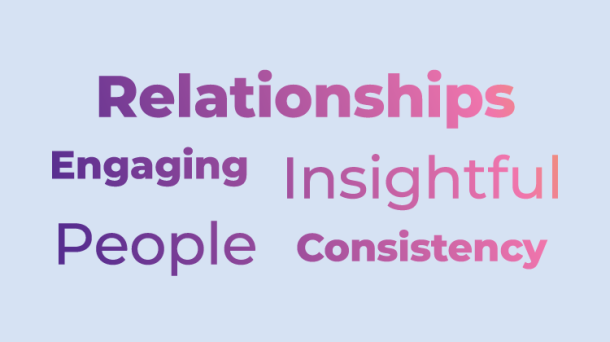Matt Grech
Content Marketing ManagerSmartling
With an ever-increasing demand content, and the entire world online consuming, reading, watching, and listening at an unprecedented pace there's an amazing opportunity for brands right now. And it's critical to deliver the most meaningful and valuable content to not only keep users coming back but to offer some guidance and support.
Brands should shift their focus to delivering authentic content that feels real, and that answers the questions your audience is asking. People want to be sure that their voice is heard, and they want tno feel cared for, not necessarily sold to.
Creating authentic content doesn't have to mean reinventing the wheel. Just by focusing on the right elements, and tailoring your approach, your brand can author personalized and authentic content to build trust with your audience.
What does it mean to produce authentic content?
Authentic content is created to offer something useful or valuable to readers, to answer their questions or ease their concerns directly. Authentic content doesn't necessarily need to include a hard sell or CTA because it informs readers enough to reach the right conclusion for their situation.
I think Adrian, Smartling's Director of Brand and Communications, summed it well: "We must be mindful of how strategically important it is to connect and recognize that this connection is fueled by human experience and the words we use to express, market and engage one another - across devices, cultures, and languages."
Now more than ever, authentic content and clear communications are critical in delivering the connections we rely on.
1. Write for your audience
It's important to understand who you are writing for before you can determine exactly what will deliver value to them. We want to offer insight that helps them tackle these challenges up-front, rather than directly selling your solution as the perfect answer.
Try to think along the lines of these questions:
- What are the challenges they're facing
- What are their concerns
- What are the biggest changes they're facing right now?
Directly plugging your service or solution might be helpful, but it can also come off as aggressive. We want to build trust with our audience, and we do that by authentically answering their questions with detailed explanations and actionable insight.
Strong content builds on a foundation of empathy.
2. Create content with localization in mind
The key to successful localization is authentic content. Your brand needs to reach an audience with a voice and tone that feels familiar like it was created with their language and culture in mind.
And the best way to capture that authentic voice is to write with localization in mind from the very beginning, to incorporate elements that can easily be translated or adapted for that new audience. For example, avoid relying on culturally relevant humor or references.
Ultimately, you’ll want to start with the best foot forward and execute on mission-critical, authentic content that can deliver value to your audience.
3. Highlight people
People buy from people. Its that simple.
So when we're thinking about creating authentic content, a core component will be the people. Both the audience reading the content, but also the people behind the content as well. Right now is a great opportunity for brands to highlight the people powering their experiences, using their experiences, and creating those experiences.
And that's exactly what we set out to do when we created our book, Move the World with Words. We wanted to illuminate the human side of translation, the translators themselves.
What started as just as a concept has now grown into a fully formed strategic brand marketing campaign focusing on the people behind translation, the brands that translate, and the audience they're reaching.
4. Expand your content, explore new mediums
It's great to keep producing blog content or to keep fleshing out videos on your channel, but it's even better to get creative. Explore entirely new mediums, for both yourself and your entire team. Try to develop content in a new way that might grab an entirely new audience that might not have discovered your brand otherwise.
Webinars and podcasts are a great place to start, enabling your brand to directly interact with an audience, and highlight the people behind the solution.
Being such a large investment, if your brand hasn't produced video before you'll want to start small. Think about how you could develop product highlights, demos, 101s or training, or even customer videos.
But webinars and podcasts are also pretty traditional, so don't be afraid to get creative
5. Keep your messaging consistent
Every single time a user engages with your content is a new touchpoint to strengthen your brand. You'll want to keep a consistent messaging throughout your communications, no matter what form of content you deliver.
While different mediums of content will require different approaches, you should aim to keep the messaging, voice, and tone consistent. For example, a video can rely on visual elements or even music to set the tone, meanwhile, a written blog requires a careful approach to word choice.
Consistency is critical in clear, authentic messaging: nothing will throw off trust more than contradictory arguments or guidance.
Building relationships with engaging content
Ultimately, your content needs to be engaging. What exactly does that mean? We want content that keeps users reading, prompts them to share, and, as Neil Patel puts it, "triggers a measure response in people as it relates to your content."
It's important to write with intent, as we said before, to answer the questions your audience is asking. But digging even deeper, you'll want to write and produce content with a clear goal in mind.
And to help carry that message, if you haven't already, your brand should work towards developing a unique voice that feels fresh. Your audience will be engaged when they feel like what they're experiencing is new and different.









